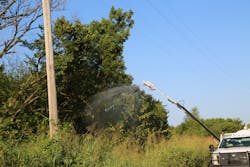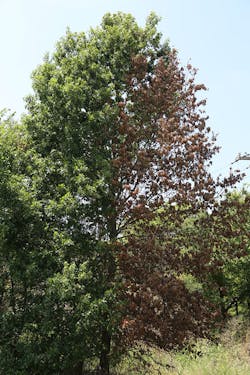Effectively managing incompatible trees throughout utility rights-of-way is a primary objective of vegetation management programs throughout the United States. Countless tree species pose a threat to grow or fall into power lines, posing the risk of lapses in electrical transmission service, wildfires and potential fines under regulations enforced by the North American Electric Reliability Corporation and the Federal Energy Regulatory Commission. Luckily, there are several ways for vegetation managers to control problematic trees. However, certain strategies provide more beneficial results than others.
Mechanical Control Methods
Simply cutting a tree down or mechanically trimming problematic limbs may seem like a suitable solution for utility vegetation managers. However, these mechanical control methods can lead to additional risk factors that need to be considered. For one, mechanical cutting can present safety hazards for tree crews working in unstable or hard-to-reach areas. This approach to managing incompatible trees is also time-consuming and particularly expensive. To make matters worse, mechanical cutting actually stimulates regrowth, which leads to continuous maintenance requirements and increased costs over time. Alternatively, selective herbicide applications can be used to impede the growth of tree limbs that threaten service reliability and potentially impact utility infrastructure.
Chemical Side-trim Applications
When used correctly, certain herbicides can stop the growth of treated limbs or branches without controlling the rest of the tree. By only managing select sections of trees that pose a threat, vegetation managers can reduce maintenance costs and public scrutiny while achieving optimum vegetation control that keeps land along ROW corridors safe and aesthetically pleasing.
While tree cutting or trimming methods require larger crews and time-consuming work along powerlines, chemical side-trim programs require less equipment and fewer people. When compared with mechanical control methods, chemical side-trim applications can be performed more efficiently, which allows vegetation managers to save time and money.
Unless spraying over the tops of trees or more than half of the tree canopy is required, in which case mechanical trimming should be considered as an alternative, the following application methods can be used to execute chemical side-trim applications throughout the year:
- Growing-season foliar chemical side-trim applications
- Dormant-season (dormant-stem) chemical side-trim applications
To learn more about these application methods, the equipment they require or which herbicide products are recommended for use in your respective region, access this helpful resource guide or contact a Corteva Vegetation Management Specialist in your area.


